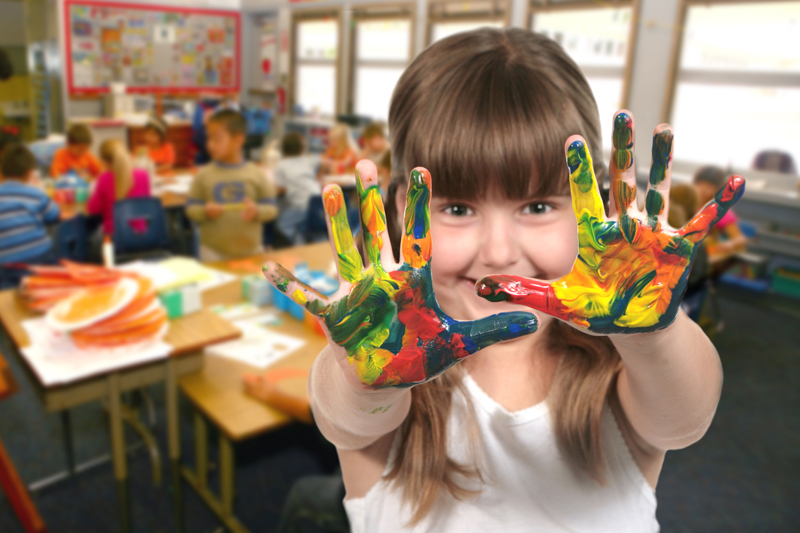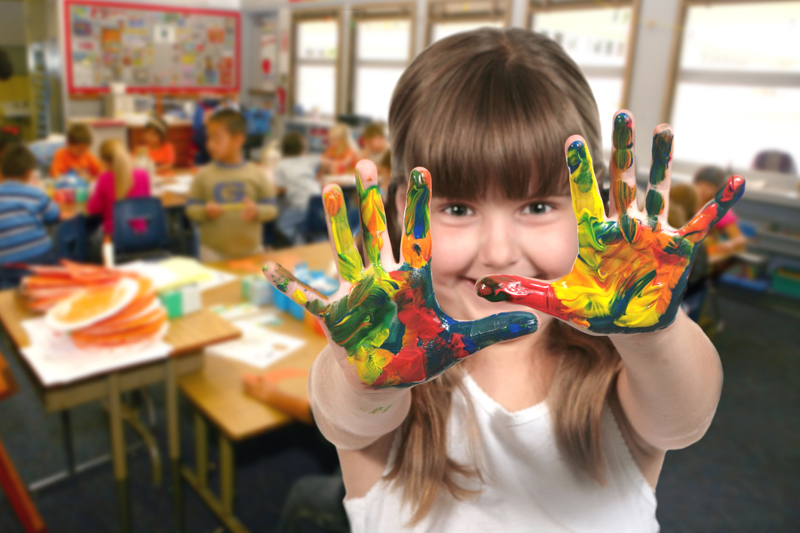Huichol Indian Yarn Paintings

The Huichol Indians from Mexico come from the area on the pacific coast in the states of Jalisco and Nayarit. This Pre-Columbian people use the retelling of stories and myths in paintings made of yarn, wood and beeswax as a method of retaining their cultural identity.
Traditionally, a piece of plywood is covered with beeswax and then a screwdriver or some other sharp tool is used to carve or scratch a design into the board. This board is then left out in the sun. As the beeswax softens in the warmth of the sun, the painter is then able to press one or two strands of yarn at a time into the design. As they are able to do more and more the design emerges and the picture becomes recognizable.
When Huichol children are four and five years old they start to draw their first pictures that may be made into wax paintings. They draw to remind them of their heritage or the power in the plants. Their legends are about heroes and heroines and the powers that are contained within the souls of the plants. In many of their yarn paintings, corn will have a prominent place as it is one of their primary crops, but they will use other animals, birds or plants also.
For our crafting experience there are several different methods we can use to imitate a Huichol yarn painting.
This project is easiest if done with colored pencils instead of glue and yard, and is doable by someone a bit younger. The yarn method should be saved for those who can work well with their hands and have the dexterity to manipulate glue and yarn at the same time. It can be done either way and the results are beautiful and have a good imitation of yarn painting.
You will need a square of cardboard. The square can be cut out of a file folder if you are planning to use colored pencils or the side of a cereal box if you will use the yarn and glue. You will need a piece that is a square 4 inches by 4 inches or 5 inches by 5 inches. If you don’t have cardboard use a white or other light piece of construction paper cut into a square of the right size.
In the center of the square draw a plant, animal or person. (I suggest starting with something with a very easy shape, such as an apple, or tomato) After you draw your figure or shape use a dark, thick pencil draw a line around it. Now you will use other colors to fill in the shape by drawing a series of lines that echo the curves and angles.
Think of the colored pencil lines as if they were different colored strands of yarn. Continue to fill in the area inside the center shape and also fill in the rest of the background with lines echoing the shape. The area outside of your shape will be filled in with the same color of pencil, whereas, the areas inside the shape will be done with pencils in the colors of the item. Corn would be yellow inside, but could be any color outside for the background of the yarn painting.
Be sure to outline your original art with the thick dark line to make it look authentic.
The same process is done if doing it with yarn. Draw the center design with pencil, and then draw a line with white glue directly over your design, and lay a strand of yarn following your line of glue. Immediately outside your design draw another line of glue and then put some very dark brown or black yarn. Use this technique to add the yarn in the center of the design and then the other colors around the design to fill the square with yarn lines echoing the shape.
Does your child want to do the more traditional project and use yarn rather than colored pencils; but is having trouble manipulating the yarn and the glue? Another option that works quite well and is more forgiving than the glue is to use double sided carpet tape.
Cover the background cardboard with a couple of strips of double sided carpet tape, it doesn’t take much. With this technique the initial drawing of the design in the center is done with yarn, as does the dark line immediately outside the center image. Other pieces of yarn are placed on the tape to echo the shape of the center design, both inside in the colors of the design, and outside to fill the background area.
This is an opportunity to experience the artwork of another culture.
Traditionally, a piece of plywood is covered with beeswax and then a screwdriver or some other sharp tool is used to carve or scratch a design into the board. This board is then left out in the sun. As the beeswax softens in the warmth of the sun, the painter is then able to press one or two strands of yarn at a time into the design. As they are able to do more and more the design emerges and the picture becomes recognizable.
When Huichol children are four and five years old they start to draw their first pictures that may be made into wax paintings. They draw to remind them of their heritage or the power in the plants. Their legends are about heroes and heroines and the powers that are contained within the souls of the plants. In many of their yarn paintings, corn will have a prominent place as it is one of their primary crops, but they will use other animals, birds or plants also.
For our crafting experience there are several different methods we can use to imitate a Huichol yarn painting.
This project is easiest if done with colored pencils instead of glue and yard, and is doable by someone a bit younger. The yarn method should be saved for those who can work well with their hands and have the dexterity to manipulate glue and yarn at the same time. It can be done either way and the results are beautiful and have a good imitation of yarn painting.
You will need a square of cardboard. The square can be cut out of a file folder if you are planning to use colored pencils or the side of a cereal box if you will use the yarn and glue. You will need a piece that is a square 4 inches by 4 inches or 5 inches by 5 inches. If you don’t have cardboard use a white or other light piece of construction paper cut into a square of the right size.
In the center of the square draw a plant, animal or person. (I suggest starting with something with a very easy shape, such as an apple, or tomato) After you draw your figure or shape use a dark, thick pencil draw a line around it. Now you will use other colors to fill in the shape by drawing a series of lines that echo the curves and angles.
Think of the colored pencil lines as if they were different colored strands of yarn. Continue to fill in the area inside the center shape and also fill in the rest of the background with lines echoing the shape. The area outside of your shape will be filled in with the same color of pencil, whereas, the areas inside the shape will be done with pencils in the colors of the item. Corn would be yellow inside, but could be any color outside for the background of the yarn painting.
Be sure to outline your original art with the thick dark line to make it look authentic.
The same process is done if doing it with yarn. Draw the center design with pencil, and then draw a line with white glue directly over your design, and lay a strand of yarn following your line of glue. Immediately outside your design draw another line of glue and then put some very dark brown or black yarn. Use this technique to add the yarn in the center of the design and then the other colors around the design to fill the square with yarn lines echoing the shape.
Does your child want to do the more traditional project and use yarn rather than colored pencils; but is having trouble manipulating the yarn and the glue? Another option that works quite well and is more forgiving than the glue is to use double sided carpet tape.
Cover the background cardboard with a couple of strips of double sided carpet tape, it doesn’t take much. With this technique the initial drawing of the design in the center is done with yarn, as does the dark line immediately outside the center image. Other pieces of yarn are placed on the tape to echo the shape of the center design, both inside in the colors of the design, and outside to fill the background area.
This is an opportunity to experience the artwork of another culture.

Related Articles
Editor's Picks Articles
Top Ten Articles
Previous Features
Site Map
Content copyright © 2023 by Launa Stout. All rights reserved.
This content was written by Launa Stout. If you wish to use this content in any manner, you need written permission. Contact Launa Stout for details.



